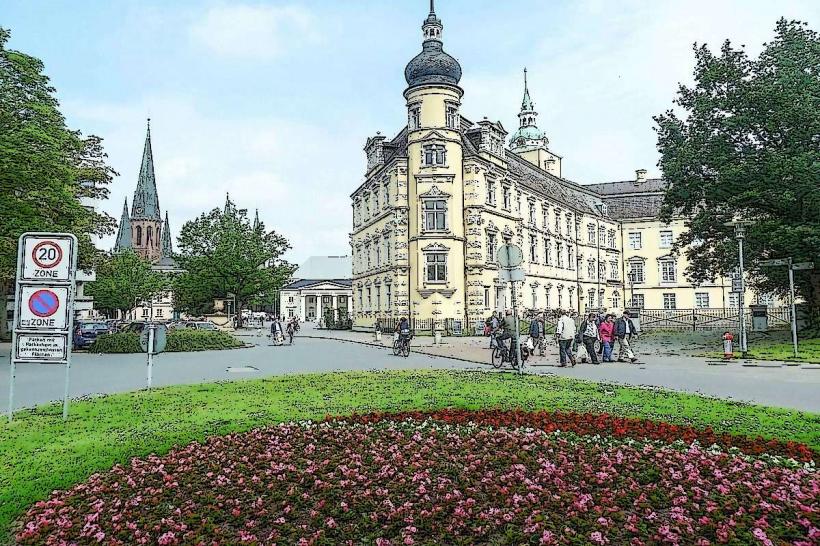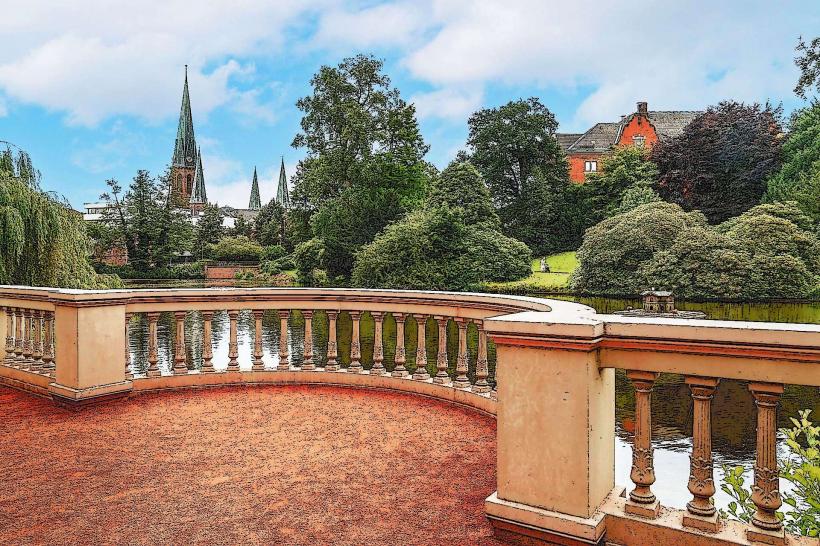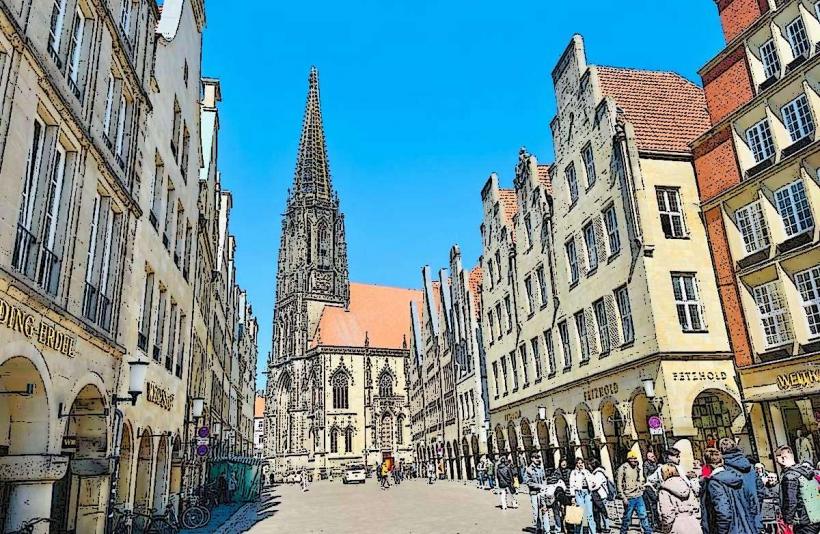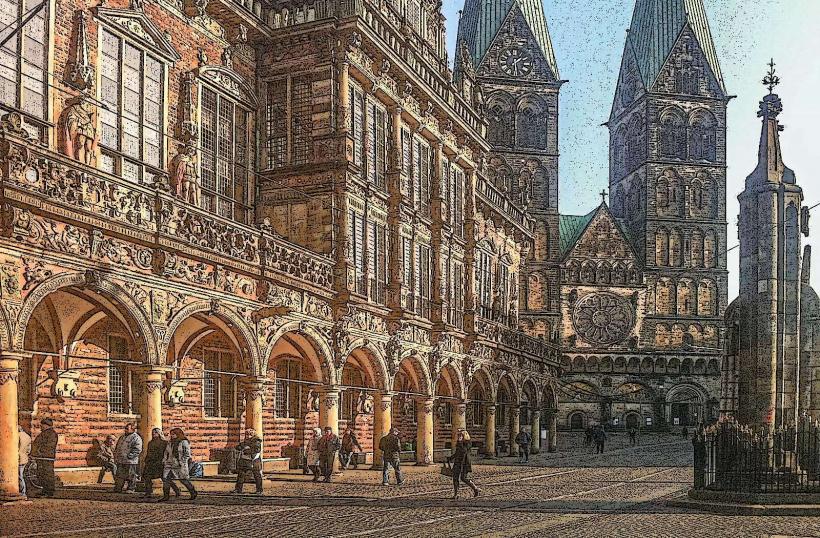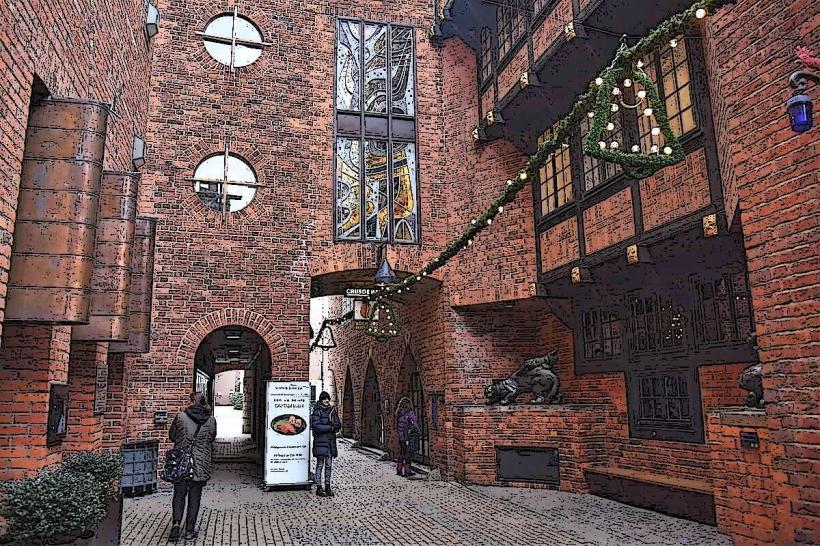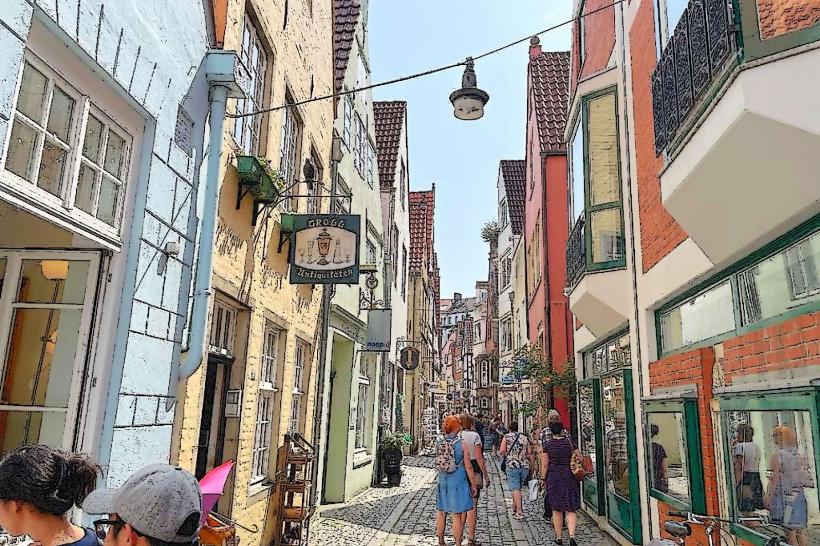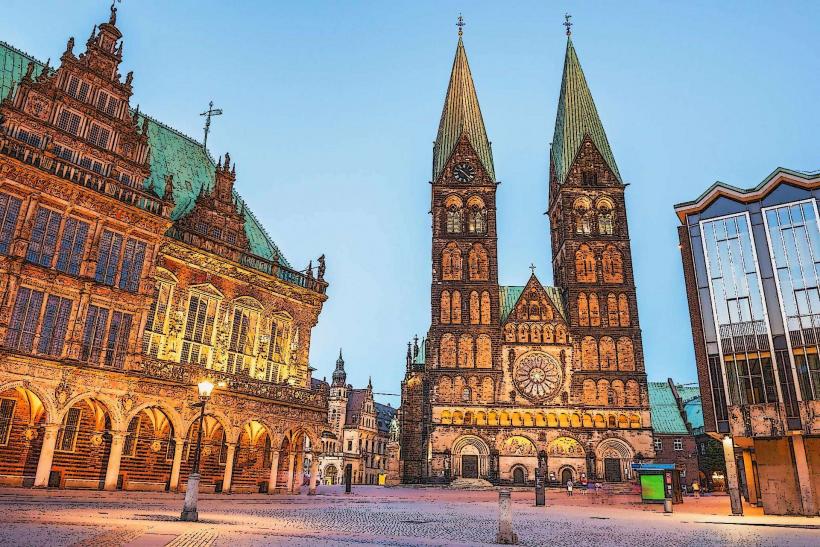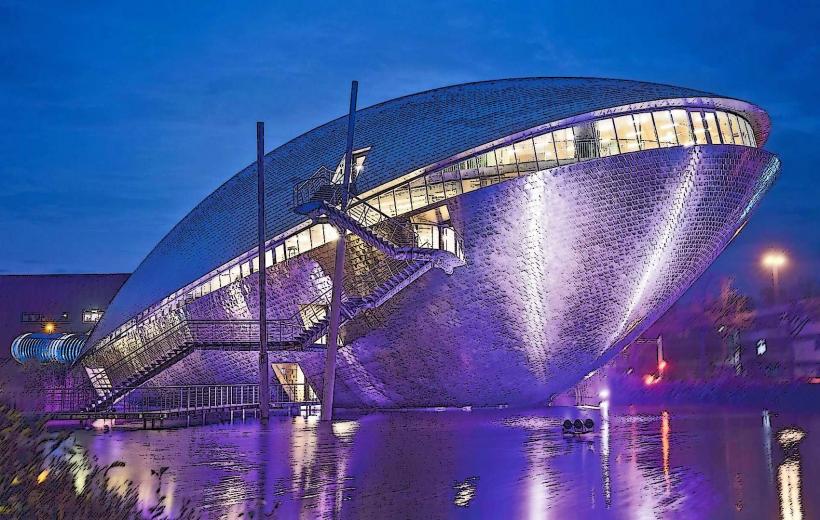Information
Landmark: Bremer RathausCity: Bremen
Country: Germany
Continent: Europe
The Bremer Rathaus (Bremen Town Hall) is one of the most iconic and historic buildings in Bremen, Germany. It stands as a symbol of the city’s rich history, political significance, and architectural achievements. This stunning building is located in the heart of Bremen's Old Town, next to the Roland Statue, and is a UNESCO World Heritage Site.
History of Bremer Rathaus
Early History
- Bremen’s Town Hall was built between 1405 and 1410 in the heart of the city, replacing an earlier medieval town hall. Over the centuries, it has undergone several expansions and renovations, but much of the original medieval design has been preserved.
- The town hall has long been the seat of Bremen’s government, serving as a civic and political center for the city. It was also used for important functions such as public meetings, trade negotiations, and celebrations of Bremen's prosperity.
Architectural Evolution
- The original town hall was constructed in the Gothic style, but the building underwent substantial renovations in the Renaissance period in the late 16th century. The most notable change during this period was the addition of the Renaissance façade, which gave the building its current appearance.
- In the 19th century, further modifications were made to accommodate the needs of the growing city and its administration, including the addition of a grand staircase and further decorative elements.
Political Significance
- Bremen’s Town Hall has historically been the seat of the city's council and remains an important political building. It has hosted numerous significant events over the centuries, including civic ceremonies, legal proceedings, and celebrations marking the city's growth and prosperity as a member of the Hanseatic League.
- The town hall's role as a symbol of Bremen’s independence and civic pride continues today as it houses both administrative offices and ceremonial spaces.
Architectural Features
Renaissance Façade
- One of the standout features of the Bremer Rathaus is its Renaissance-style façade, which was added in the 16th century. The façade is characterized by its elaborate carvings, large windows, and ornate details, including statues of important figures in Bremen's history.
- The building's main entrance is flanked by two striking pillars, which support a richly decorated arcade. Above the entrance, the building is adorned with statues of Bremen’s rulers and symbolic figures, celebrating the city’s power and wealth during the Renaissance.
Gothic Hall
- The Gothic Hall (Rittersaal) is the heart of the town hall. This medieval hall, located on the upper floor of the building, was used for council meetings and grand ceremonies. The hall is beautifully decorated with wooden beams, stained-glass windows, and intricate Gothic vaulting, giving it a sense of grandeur and historical depth.
- The Gothic Hall is renowned for its acoustic properties and hosts various events, including concerts, official meetings, and ceremonies. It is also a popular space for banquets and celebrations.
Bremen’s Wall Paintings
- The town hall’s interior is also home to several remarkable wall paintings that depict scenes from Bremen’s history, illustrating the city’s growth, trade, and maritime heritage. These murals, located in the halls and stairwells, add to the building’s grandeur and historical depth.
The Stadthalle (City Hall Chambers)
- The town hall also features the Stadthalle on the ground floor, which is used for official business and city council meetings. It is designed to reflect the civic importance of the building and the democratic processes that have shaped Bremen over the centuries.
The Golden Chamber (Goldener Saal)
- The Goldener Saal is a beautiful ceremonial hall used for formal events, such as weddings and diplomatic receptions. It is characterized by its elegant golden accents, stained-glass windows, and ornate chandeliers.
The Rathausportal (Town Hall Portal)
- The portal of the town hall is one of the most impressive features, showcasing intricate Renaissance carvings and statues. It is an excellent example of the wealth and power of Bremen during the Renaissance era.
UNESCO World Heritage Status
In 2004, the Bremer Rathaus and the Roland Statue were jointly inscribed on the UNESCO World Heritage List as a symbol of Bremen's historical significance. The town hall, together with the Roland Statue in the adjacent market square, represents Bremen’s long-standing independence and its important role in European trade, commerce, and governance.
The Roland Statue
Standing just outside the town hall, the Roland Statue is another UNESCO World Heritage Site. This medieval statue, dating back to 1404, depicts the knight Roland, a symbol of Bremen’s freedom and autonomy. The statue stands as a reminder of Bremen's historical role as a free city and a member of the Hanseatic League.
Visiting Bremer Rathaus
- Guided Tours
- Visitors can take guided tours of the Bremer Rathaus to learn about its rich history and the important role it has played in the development of the city. Tours typically include visits to the Gothic Hall, the Golden Chamber, and the town hall chambers, as well as explanations of the building’s history, architecture, and the murals inside.
- The Bremen Town Hall Museum
- The town hall also features a small museum that displays objects related to Bremen's civic history, including important documents, ceremonial items, and photographs from the building's long history.
- Events and Concerts
- The Bremer Rathaus continues to host important public events, from civic ceremonies to concerts. The Gothic Hall and Golden Chamber are regularly used for cultural and official events, offering visitors a chance to experience the building in a more interactive way.
- Opening Hours and Tickets
- The Bremer Rathaus is generally open to the public, though certain parts may be closed for official functions. Visitors are encouraged to check the official website for up-to-date information on opening hours, tours, and ticket prices.
Significance Today
The Bremer Rathaus remains a symbol of Bremen's civic pride, independence, and rich history. It is not just a government building but also a cultural landmark, illustrating the city’s deep connection to both its medieval roots and its Renaissance-era prosperity. The building continues to be an important part of Bremen’s identity, drawing visitors from around the world who come to admire its stunning architecture, historical significance, and central role in the life of the city.
Summary
The Bremer Rathaus is an architectural gem that offers visitors a chance to explore Bremen's fascinating history and cultural legacy. From its Renaissance façade to its Gothic Hall, the building is a stunning blend of medieval and Renaissance design, representing Bremen's independence and wealth. As a UNESCO World Heritage Site, it stands as one of the most important and cherished landmarks in Bremen, inviting visitors to explore the past while enjoying its vibrant present.

